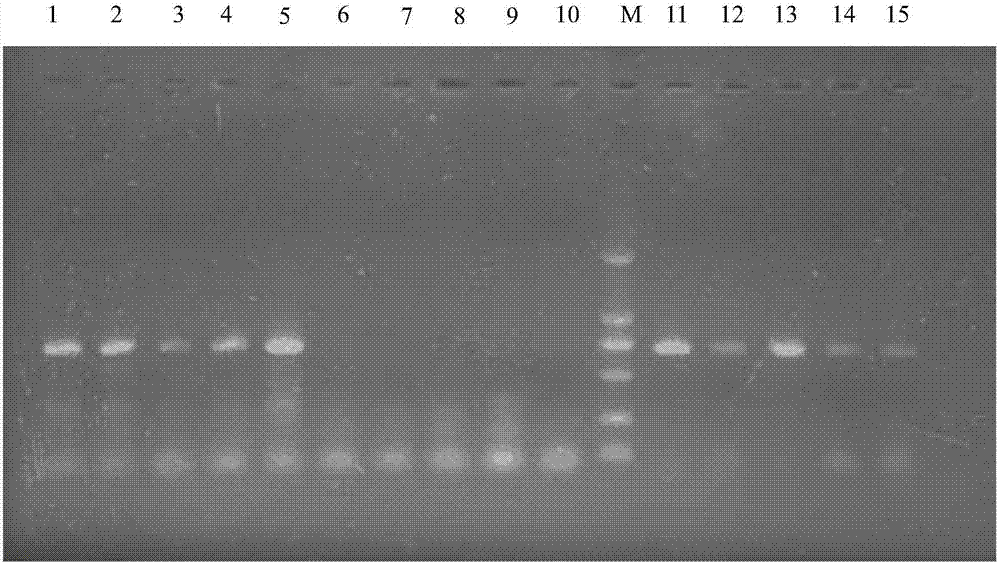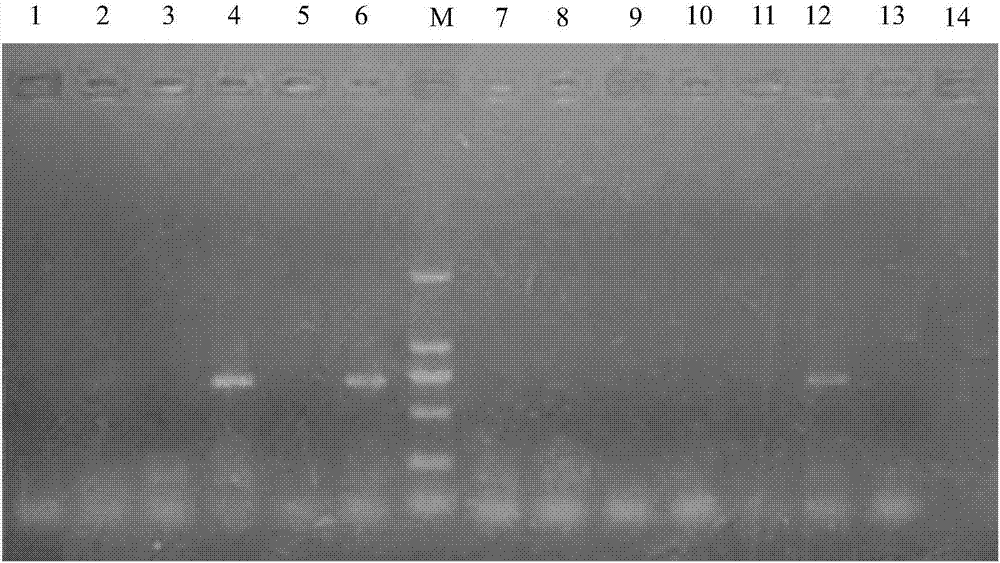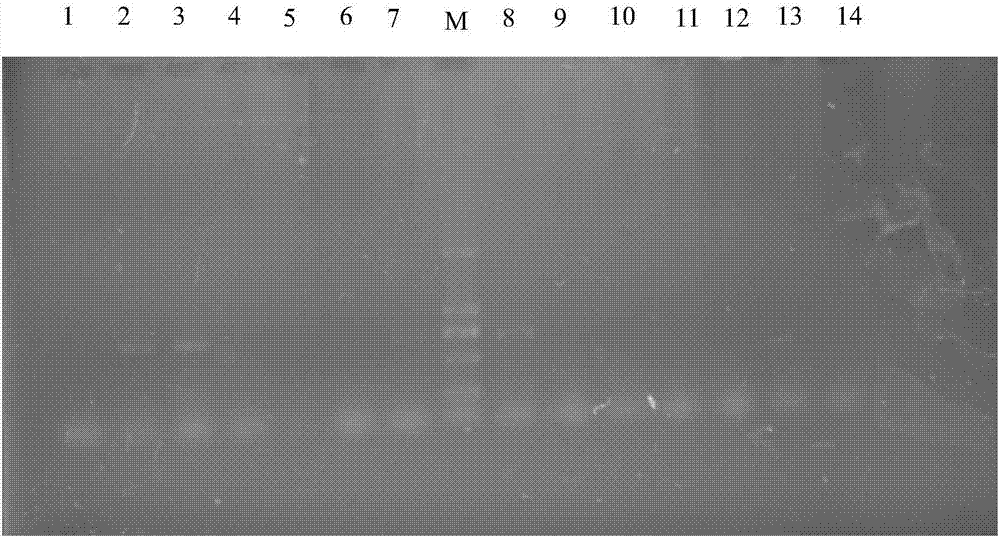Method for detecting parasitism rate and ovipositing quantity of aphelinus mali in eriosoma lanigerum
An apple aphid and sunbee technology, applied in the field of agricultural biotechnology detection, can solve problems such as failure to hatch or die before developing to the pupal stage, inaccurate egg production of sunbees, time-consuming and labor-intensive, etc., and achieve clear control. Harmful effect, overcoming the effect of low parasitic rate
- Summary
- Abstract
- Description
- Claims
- Application Information
AI Technical Summary
Problems solved by technology
Method used
Image
Examples
Embodiment 1
[0037] Embodiment 1: the design of primer
[0038]The applicant's previous research found that, based on the 700bp gene in the second half of the mitochondrial COI, my country's sun bee is divided into three haplotypes, Hap1, Hap2, and Hap3, which can be divided into two sun bee genetic branches, the Liaoning branch and the Shandong branch. There are differences in the biological characteristics and pest control ability of these two genetic branches, and the research found that YL (Yili), ZT (Zhaotong), HZ (Heze), TA (Tai'an), LC (Liaocheng) and QD (Qingdao) It is a pure population of Shandong branch, DL (Dalian), HLD (Huludao), QHD (Qinhuangdao) and SJZ (Shijiazhuang) is a pure population of Liaoning branch, YT (Yantai), WF (Weifang), BD ( Baoding), JZ (Jinzhong), CC (Changzhi) and YC (Yuncheng) are mixed populations of two clades. Therefore, when studying the parasitism rate of sunbee on the apple aphid and the detection method of egg production, we should fully consider the t...
Embodiment 2
[0057] Example 2 Detection of sunbee, apple aphid and apple aphid parasitized by sunbee by PCR amplification technology
[0058] (1) In the apple orchard of Chengyang District, collect 5 sunbee adults, apple aphids and apple cotton aphids parasitized by sunbees;
[0059] (2) Preparation of lysate
[0060] Prepare a reagent bottle with a capacity of more than 200ml, wash it and use it for the experiment
[0061] First need to equip 0.05mol / L Tris-HCl (pH 8.4)
[0062] 1) 0.1mol / L Tris: 1.211g Tris for 100ml distilled water
[0063] 2) 0.1mol / L HCl: 0.862mL (the concentration of common industrial hydrochloric acid is 12M) dissolved in 100mL distilled water
[0064] 3) Mix 50mL of 0.1mol / L Tris alkali solution with 17.2mL of 0.1mol / L HCl, add water to make up to 100mL, and obtain 0.05mol / L Tris-HCl (pH 8.4) (sterilize after preparation)
[0065] Add the following reagents to 0.05mol / L Tris-HCl (pH 8.4)
[0066]
[0067] After adding everything, put it in the refrigerator ...
Embodiment 3
[0085] Embodiment 3 detects the parasitism rate of the apple cotton aphid parasitized by the sun bee in the field
[0086] (1) On May 20, 2016, an apple branch with apple aphids (some of which had been parasitized by sun bees) was collected in the field, and brought back to the room with tweezers to gently remove all the apple aphids, a total of 13;
[0087] (2) Put one head of the collected cotton aphid into a 0.2 mL centrifuge tube, add 10 μL of lysate, grind and homogenize the sunbee with a 10 μL sealing tip, and then add 40 μL of lyse. Place in a water bath at 65°C for 15 minutes, then at 95°C for 10 minutes, and store below -20°C;
[0088] (3) using the genomic DNA obtained in step (2) as a template, performing PCR amplification on the target gene in the genomic DNA to obtain a PCR amplification product;
[0089] The PCR amplification system is 13 μl:
[0090] Genomic DNA solution 2μl, 20μM primer 0.26μl, 5U / μl Taq enzyme 0.2μl, 10×Taq Buffer (buffer) 1.3μl, 10mM dNTP 1...
PUM
 Login to View More
Login to View More Abstract
Description
Claims
Application Information
 Login to View More
Login to View More - R&D
- Intellectual Property
- Life Sciences
- Materials
- Tech Scout
- Unparalleled Data Quality
- Higher Quality Content
- 60% Fewer Hallucinations
Browse by: Latest US Patents, China's latest patents, Technical Efficacy Thesaurus, Application Domain, Technology Topic, Popular Technical Reports.
© 2025 PatSnap. All rights reserved.Legal|Privacy policy|Modern Slavery Act Transparency Statement|Sitemap|About US| Contact US: help@patsnap.com



